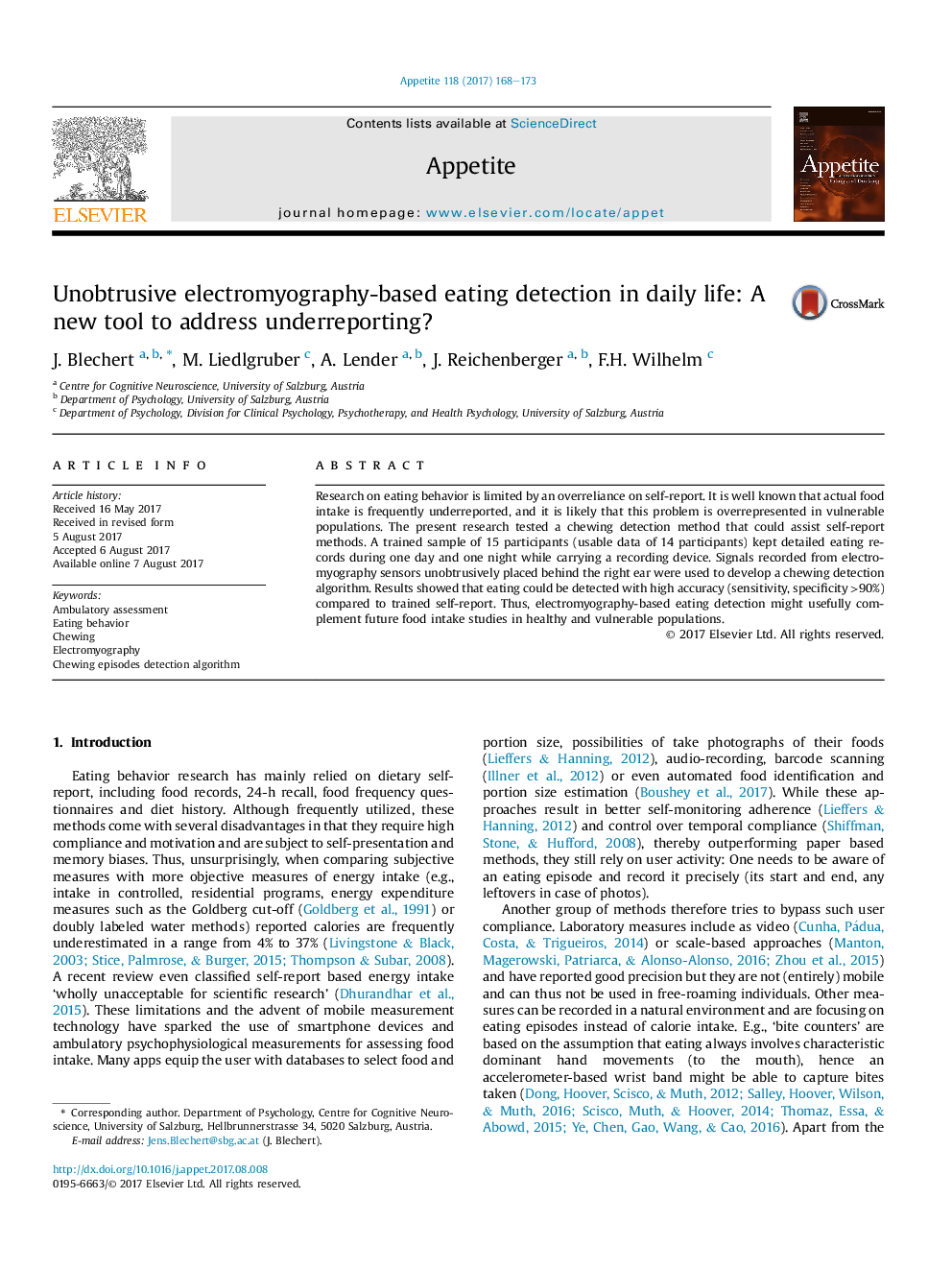| Article ID | Journal | Published Year | Pages | File Type |
|---|---|---|---|---|
| 5044235 | Appetite | 2017 | 6 Pages |
Research on eating behavior is limited by an overreliance on self-report. It is well known that actual food intake is frequently underreported, and it is likely that this problem is overrepresented in vulnerable populations. The present research tested a chewing detection method that could assist self-report methods. A trained sample of 15 participants (usable data of 14 participants) kept detailed eating records during one day and one night while carrying a recording device. Signals recorded from electromyography sensors unobtrusively placed behind the right ear were used to develop a chewing detection algorithm. Results showed that eating could be detected with high accuracy (sensitivity, specificity >90%) compared to trained self-report. Thus, electromyography-based eating detection might usefully complement future food intake studies in healthy and vulnerable populations.
